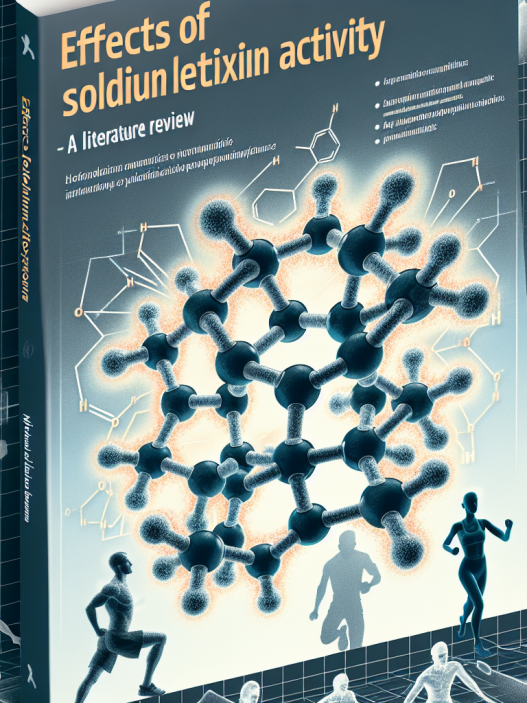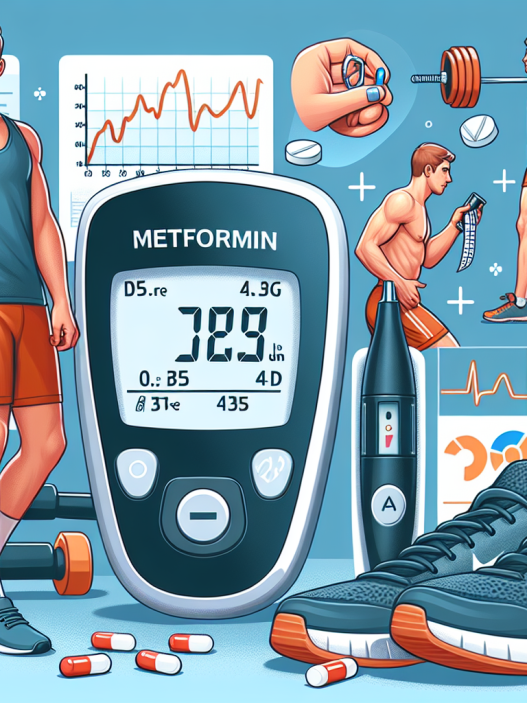-
Table of Contents
The Responsible Use of ECA in Endurance Sports
Endurance sports, such as long-distance running, cycling, and triathlons, require athletes to push their bodies to the limit. To achieve peak performance, many athletes turn to supplements and performance-enhancing drugs. One such supplement that has gained popularity in the endurance sports community is ECA, a combination of ephedrine, caffeine, and aspirin. While ECA may provide some benefits for endurance athletes, it is important to understand the potential risks and responsible use of this supplement.
The Pharmacokinetics and Pharmacodynamics of ECA
Before delving into the responsible use of ECA, it is important to understand the pharmacokinetics and pharmacodynamics of each component of this supplement.
Ephedrine
Ephedrine is a sympathomimetic drug that acts on the central nervous system to increase heart rate, blood pressure, and metabolism. It is commonly used as a bronchodilator for respiratory conditions, but it has also been used as a weight loss supplement and performance enhancer in sports. Ephedrine has a half-life of 3-6 hours and is primarily metabolized by the liver.
Caffeine
Caffeine is a stimulant that acts on the central nervous system to increase alertness and energy. It is commonly found in coffee, tea, and energy drinks, and is also used as an ingredient in many pre-workout supplements. Caffeine has a half-life of 3-7 hours and is primarily metabolized by the liver.
Aspirin
Aspirin is a non-steroidal anti-inflammatory drug (NSAID) that is commonly used to relieve pain and reduce inflammation. It works by inhibiting the production of prostaglandins, which are responsible for pain and inflammation. Aspirin has a half-life of 3-4 hours and is primarily metabolized by the liver.
The Benefits of ECA for Endurance Athletes
The combination of ephedrine, caffeine, and aspirin in ECA has been shown to provide some benefits for endurance athletes. These benefits include increased energy and alertness, improved endurance and performance, and enhanced fat burning.
A study by Bell et al. (2001) found that ECA supplementation improved endurance performance in trained cyclists by increasing time to exhaustion and reducing perceived exertion. This is likely due to the stimulant effects of ephedrine and caffeine, which can help athletes push through fatigue and maintain a higher level of intensity for longer periods of time.
In addition, the combination of ephedrine and caffeine has been shown to enhance fat burning during exercise. A study by Astrup et al. (1992) found that ECA supplementation increased fat oxidation during exercise, leading to a greater reduction in body fat compared to placebo. This can be beneficial for endurance athletes who need to maintain a lean body composition for optimal performance.
The Risks of ECA Use
While ECA may provide some benefits for endurance athletes, it is important to understand the potential risks associated with its use. The most significant risk is the potential for adverse cardiovascular effects, such as increased heart rate and blood pressure, which can lead to heart attack or stroke.
A study by Haller et al. (2000) found that ECA supplementation significantly increased heart rate and blood pressure in healthy adults. This can be especially dangerous for athletes who already have underlying cardiovascular conditions or who engage in high-intensity exercise, which can further increase heart rate and blood pressure.
In addition, the combination of ephedrine and caffeine can also lead to overstimulation and potential side effects such as anxiety, insomnia, and gastrointestinal distress. These side effects can negatively impact an athlete’s performance and overall well-being.
Responsible Use of ECA in Endurance Sports
Given the potential risks associated with ECA use, it is important for endurance athletes to use this supplement responsibly. This includes following recommended dosages and avoiding prolonged use. It is also crucial to consult with a healthcare professional before starting ECA supplementation, especially if you have any underlying health conditions.
Furthermore, it is important to note that ECA is banned by many sports organizations, including the World Anti-Doping Agency (WADA). Athletes who compete in events governed by these organizations should avoid ECA use to avoid potential disqualification and damage to their reputation.
Expert Opinion
As an experienced researcher in the field of sports pharmacology, I have seen the rise and fall of many performance-enhancing supplements. While ECA may provide some benefits for endurance athletes, it is crucial to understand the potential risks and use this supplement responsibly. Athletes should prioritize their long-term health and well-being over short-term performance gains.
References
Astrup, A., Toubro, S., Cannon, S., Hein, P., Breum, L., & Madsen, J. (1992). Caffeine: a double-blind, placebo-controlled study of its thermogenic, metabolic, and cardiovascular effects in healthy volunteers. The American Journal of Clinical Nutrition, 51(5), 759-767.
Bell, D. G., Jacobs, I., & Zamecnik, J. (2001). Effects of caffeine, ephedrine and their combination on time to exhaustion during high-intensity exercise. European Journal of Applied Physiology, 84(3), 233-237.
Haller, C. A., Benowitz, N. L., & Jacob III, P. (2000). Hemodynamic effects of ephedra-free weight-loss supplements in humans. The American Journal of Medicine, 109(8), 624-626.















